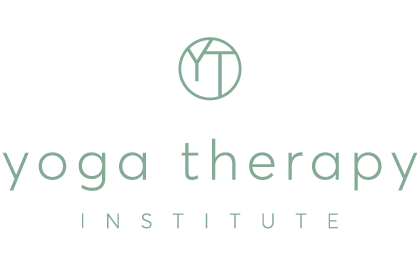A 2018 study shows that a regular yoga practice for students with cancer can benefit the quality of life, sleep disturbance, anxiety, fatigue and depression symptoms often suffered by those undergoing treatments for cancer. Significantly, it found that “a single yoga group class resulted in statistically and clinically significant improvement of multiple patient and caregiver self-reported symptoms.”
The reality for 1.1 million Australians
Australia currently has 1.1 million people affected by cancer. Over the years the survival rate from all cancers combined increased from 48% (1988) to 69% (2018). Increasingly, many cancer patients are seeking yoga as part of their journey to recovery. It is common for yoga teachers or therapists to meet students who have been diagnosed with cancer, so an educated approach to safely managing these students is required. Teaching a generic vinyasa or hatha class will not meet the specific needs of students with cancer. Moreover, serious side-effects can arise which severely impact quality of life for those undergoing cancer treatment, such as:
- Fatigue
- Nausea and vomiting
- Pain and infection
- Reduced functional movement
- Reduced bone density
- Peripheral Neuropathy
- Anxiety and Depression
This is where specialist yoga classes and group yoga therapy, such as at the Chris O’Brien Lifehouse LivingRoom, provide safe and targeted yoga practices to cater for individual student needs. These sessions assist in management of anxiety and fatigue. They also provide a safe and supportive environment to get physically active. The classes always include breath centred movement, gentle pranayama practices and relaxation, all modified as required for each student’s circumstances.
How do you teach Yoga to your students with Cancer?
As a Yoga Teacher or Yoga Therapist you will encounter students with a cancer history so you need to understand what the student is dealing with, and how to employ some fundamental cancer-safe practices.
Firstly, it’s vital to understand the facts about cancer and its treatments. Know that you will be providing yoga to someone who has likely experienced surgery, chemotherapy and radiotherapy. Upskill your knowledge on these treatments in relation to the specific cancer and their effects on the body. Many students with cancer will be having a challenging time straight from diagnosis. Fear and uncertainty are likely to dominate but appropriate yoga practices may help cancer patients navigate their way through their worry and confusion.
Secondly, know the risks. Be armed with knowledge of risks and contraindications of any yoga practice in relation to a student with cancer. Be prepared to adapt to the changing needs of your students with cancer. For instance, your student may be experiencing side effects from treatment such as osteopenia or lymphoedema, wherein a general class will be unsuitable. Therefore, it is important to gain a medical history prior to the student commencing classes, ensuring privacy of information and sensitivity when questioning. You might be presented with a student who has fragile bone density, abdominal obstructions, weak muscles, peripheral neuropathy or a compromised immune system. So, will your yoga class be safe for this individual?
The abovementioned risks may also be present for cancer survivors. The journey to recovery may not be short and straightforward, so knowing the risks is equally important when teaching yoga to cancer survivors.
5 Tips on how to support students with Cancer
- Create an environment where students can build relationships. Yoga is about community, and this doesn’t stop after a cancer diagnosis. A cancer diagnosis can be an isolating experience therefore creating a sanga in the class is hugely beneficial to cancer patients to connect with others who share a similar experience.
- Include appropriate pranayama and breath awareness exercises, such as pranava pranamaya or sitali/ sitkari for example. Teaching students to connect with and manage their emotional state through breathwork will be empowering. They learn yoga tools to self-regulate in difficult times.
- Be authentic rather than coddling. Inexperienced teachers may have trepidation due to fears around death. Overly compassionate teachers may leave the student feeling like an invalid. Instead, create an atmosphere of self-direction for students where they feel free to choose what is best for them that day – is it an active or restful practice?
- Language is very powerful so using positive and empowering language throughout the class can help students reframe their experiences.
- Give students agency. Teach them simple practices that can be done throughout everyday life. This will enable them to gain a sense of empowerment back over their body and quality of life.
Where to Learn More
Lisa Blanch is a IAYT Certified Yoga Therapist and specialist in Yoga for Cancer. Lisa hosts the Yoga for Cancer 2-Day Workshop with the Yoga Therapy Institute.

